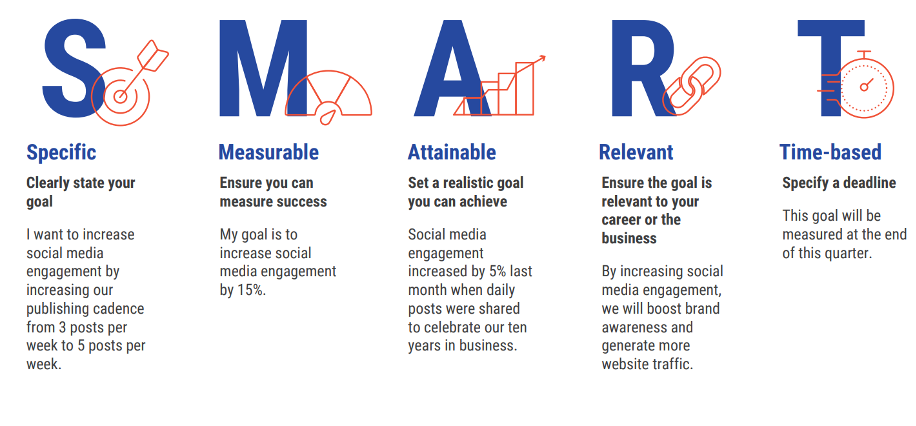You’ve likely heard the phrase “a picture is worth a thousand words,” which refers to the idea that it’s often easier to convey a message with an image rather than text. But have you ever thought about how to connect this idea to your workplace communications?
Effective workplace communication helps foster positive employee engagement and streamline processes. Ineffective workplace communication has the opposite effect, opening the door for disruption and distraction. If you’re struggling with your workplace communications – especially if employees aren’t connecting with your core messages – it may be time to pivot to a more visual approach.
What is Visual Communications?
By definition, visual communications is “the use of visual elements to convey ideas and information.” It’s an important form of storytelling, which is used to engage an audience and connect them to something bigger than themselves.
Why Should I Prioritize Visual Communications?
There are numerous benefits to incorporating more visual elements in your communications. Here are just a few.
- Makes content more engaging – Understandably, looking at a flow chart or graph is much more interesting that looking at a long bulleted list.
- Simplifies complex ideas – Sometimes two or three pages of content can be condensed down into one, visually-appealing image.
- Helps convey meaning – Imagery can help add context to your text and, in turn, make your information clearer and more accessible.
- Saves time and increases efficiency – Swapping a wordy presentation with a short video or clip not only saves you time, but it also helps capture the attention of your audience. This is especially important considering attention spans are becoming shorter and shorter.
- Improves information recall – As mentioned, visuals help facilitate storytelling, which is going to help your audience better relate to and remember your content.
- Establishes and maintains brand identity – Company-specific assets, like logos and typography, help increase brand awareness and recognition by being easily and widely recognizable.
Of note, communicating visually is especially important on social media apps like Facebook, Instagram, and LinkedIn, where companies and organizations are competing to stand out and share their stories and insights. It’s a great idea to utilize GIFs, animations, and short clips on these platforms – anything that will quickly capture the attention of online users.
How Can I Use More Visual Elements in Everyday Communication?
Let’s say you’re beginning the performance review cycle and need to send out an internal communication to remind employees and managers to complete the performance process, which includes identifying goals for the upcoming year.
Your written communication may sound something like this:
“Because we are committed to your professional growth, we are excited to begin this year’s performance review process. Part of this process involves identifying goals for the upcoming year. To ensure goals are as helpful as possible, we encourage you to follow the SMART goals format, which is as follows:
Specific – Make your goal specific and narrow for more effective planning
- I want to increase social media engagement by increasing our publishing cadence from 3 posts per week to 5 posts per week.
Measurable – Make sure your goal and progress are measurable
- Our goal is to increase social media engagements by 25%.
Attainable – Make sure you can reasonability accomplish your goal within a certain time frame
- Social media engagements increased by 5% last month when daily posts were shared to celebrate our ten-year work anniversary.
Relevant – Your goal should align with your values and long-term objectives
- By increasing social media engagement, we will boost brand awareness and drive more traffic to our website.
Time-based – Set a realistic but ambitious end date to clarify task prioritization and increase motivation.
- Engagement increases will be measured at the end of this quarter.
Thank you in advance for taking the time to make the performance review process successful. If you have any questions, please don’t hesitate to reach out.”
However, by condensing your language and substituting the bullets for a visually-appealing chart, you can shorten your communicate by including something like this:
Of course, you may decide to use both text-based and visual elements in your communications since people absorb information differently. At the end of the day, it’s most important that you deliver your messages in a way that resonates with your audience, whether that’s employees, leaders, or external groups. Staying engaged and connected is a great way to keep unwanted visitors, like a union or other third-party, from encroaching on your organization.
At People Results, we’ve given C-suite executives the tools and support they need to be true champions for their organizations. We believe every business is different, and each requires its own holistic and customized approach to communications. Whether you need an internal communications assessment, guidance in developing your internal communications strategy or social media strategy, digital media intelligence, crisis communications services, media relations, or media training, we have expert communications consultants who can quickly provide a specialized solution. Contact us online today to discuss the next steps, or give us a call at (313) 965-0350.




